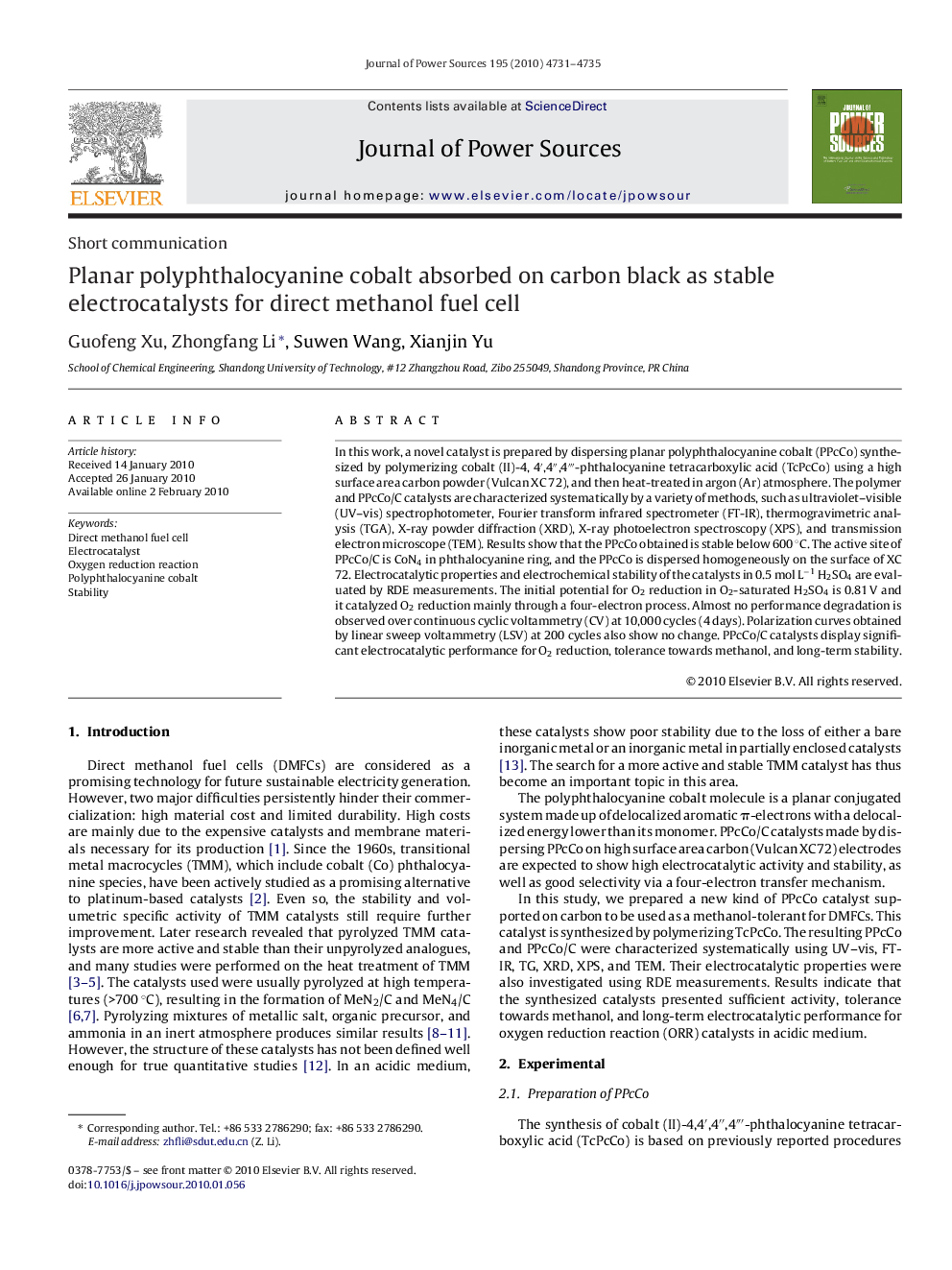| Article ID | Journal | Published Year | Pages | File Type |
|---|---|---|---|---|
| 1290090 | Journal of Power Sources | 2010 | 5 Pages |
In this work, a novel catalyst is prepared by dispersing planar polyphthalocyanine cobalt (PPcCo) synthesized by polymerizing cobalt (II)-4, 4′,4″,4‴-phthalocyanine tetracarboxylic acid (TcPcCo) using a high surface area carbon powder (Vulcan XC 72), and then heat-treated in argon (Ar) atmosphere. The polymer and PPcCo/C catalysts are characterized systematically by a variety of methods, such as ultraviolet–visible (UV–vis) spectrophotometer, Fourier transform infrared spectrometer (FT-IR), thermogravimetric analysis (TGA), X-ray powder diffraction (XRD), X-ray photoelectron spectroscopy (XPS), and transmission electron microscope (TEM). Results show that the PPcCo obtained is stable below 600 °C. The active site of PPcCo/C is CoN4 in phthalocyanine ring, and the PPcCo is dispersed homogeneously on the surface of XC 72. Electrocatalytic properties and electrochemical stability of the catalysts in 0.5 mol L−1 H2SO4 are evaluated by RDE measurements. The initial potential for O2 reduction in O2-saturated H2SO4 is 0.81 V and it catalyzed O2 reduction mainly through a four-electron process. Almost no performance degradation is observed over continuous cyclic voltammetry (CV) at 10,000 cycles (4 days). Polarization curves obtained by linear sweep voltammetry (LSV) at 200 cycles also show no change. PPcCo/C catalysts display significant electrocatalytic performance for O2 reduction, tolerance towards methanol, and long-term stability.
